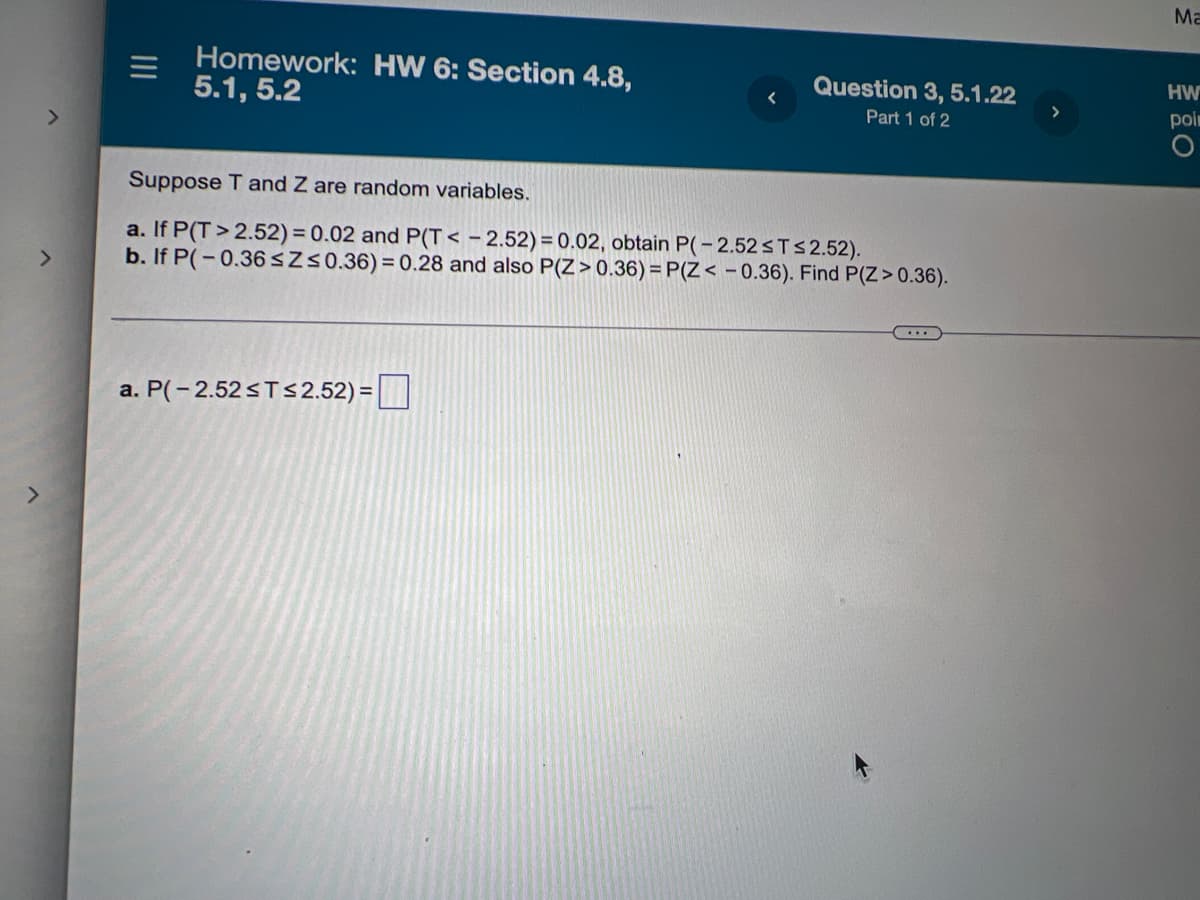Suppose T and Z are random variables. a. If P(T> 2.52) = 0.02 and P(T<-2.52)=0.02, obtain P(-2.52 ≤ T ≤ 2.52). b. If P(-0.36 ≤Z≤0.36)=0.28 and also P(Z > 0.36)=P(Z < -0.36). Find P(Z > 0.36).
Suppose T and Z are random variables. a. If P(T> 2.52) = 0.02 and P(T<-2.52)=0.02, obtain P(-2.52 ≤ T ≤ 2.52). b. If P(-0.36 ≤Z≤0.36)=0.28 and also P(Z > 0.36)=P(Z < -0.36). Find P(Z > 0.36).
Algebra & Trigonometry with Analytic Geometry
13th Edition
ISBN:9781133382119
Author:Swokowski
Publisher:Swokowski
Chapter10: Sequences, Series, And Probability
Section10.8: Probability
Problem 32E
Related questions
Question
Solve A and B

Transcribed Image Text:>
Homework: HW 6: Section 4.8,
5.1, 5.2
Question 3, 5.1.22
Part 1 of 2
Suppose T and Z are random variables.
a. If P(T>2.52) = 0.02 and P(T< -2.52)=0.02, obtain P(-2.52 ≤ T ≤ 2.52).
b. If P(-0.36 ≤Z≤0.36) = 0.28 and also P(Z > 0.36)=P(Z < -0.36). Find P(Z > 0.36).
a. P(-2.52 ≤ T ≤ 2.52) =
Ma
HW
poi
Expert Solution
This question has been solved!
Explore an expertly crafted, step-by-step solution for a thorough understanding of key concepts.
This is a popular solution!
Trending now
This is a popular solution!
Step by step
Solved in 2 steps

Recommended textbooks for you

Algebra & Trigonometry with Analytic Geometry
Algebra
ISBN:
9781133382119
Author:
Swokowski
Publisher:
Cengage

Elementary Linear Algebra (MindTap Course List)
Algebra
ISBN:
9781305658004
Author:
Ron Larson
Publisher:
Cengage Learning

Algebra & Trigonometry with Analytic Geometry
Algebra
ISBN:
9781133382119
Author:
Swokowski
Publisher:
Cengage

Elementary Linear Algebra (MindTap Course List)
Algebra
ISBN:
9781305658004
Author:
Ron Larson
Publisher:
Cengage Learning